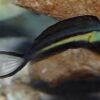Exploring the Image of Dragons in Contemporary Chinese Paintings
The dragon (龙, lóng) has been a central figure in Chinese art and culture for thousands of years, symbolizing power, wisdom, and prosperity. In ancient times, dragons frequently appeared in imperial paintings, religious murals, and traditional ink wash artworks. However, as China evolved, so did its artistic expressions. Today, contemporary Chinese painters continue to depict dragons, blending traditional techniques with modern interpretations to create diverse and innovative representations of this mythical creature.
This article explores the role of dragons in contemporary Chinese paintings, examining how artists reinterpret the dragon motif, the techniques they employ, and the symbolism behind their works.
1. The Evolution of Dragon Imagery in Chinese Art
a. The Traditional Dragon Motif
Historically, dragons in Chinese paintings were depicted as serpentine creatures with long bodies, sharp claws, and flowing whiskers. Traditional artists emphasized:
- Cloud-dwelling dragons symbolizing divine power and weather control.
- Imperial dragons representing the emperor’s authority.
- Yin-Yang dragon interactions, illustrating cosmic balance.
These traditional themes were often seen in imperial scrolls, Buddhist murals, and Daoist paintings.
b. Shifting Towards Contemporary Art
In modern times, Chinese artists have reimagined the dragon to reflect new cultural, social, and political themes. Contemporary dragon paintings now incorporate:
- Abstract interpretations using bold brushstrokes.
- Fusion with Western art techniques like impressionism and surrealism.
- Symbolic representations addressing modern concerns like environmentalism and globalization.
2. Techniques and Styles in Contemporary Dragon Paintings
a. Ink Wash and Calligraphic Dragons (水墨画)
One of the most enduring styles in Chinese art is ink wash painting (水墨画, shuǐmò huà), which many contemporary artists still use to portray dragons. However, modern painters modify this style by:
- Using abstract strokes to create fluid, dynamic dragon forms.
- Incorporating calligraphy within dragon images, blending text and visual elements.
- Experimenting with monochrome and color variations to add depth and emotion.
Example: Xu Bing, a renowned contemporary Chinese artist, has integrated dragons into his famous calligraphic series, transforming traditional characters into dragon-like forms.
b. Abstract and Expressionist Dragons
Many contemporary Chinese artists use abstract expressionism to portray dragons with unconventional shapes, colors, and brushstrokes.
- Bold, chaotic brushwork conveys energy and movement.
- Distorted dragon forms symbolize modern anxieties and identity struggles.
- Mixing traditional ink with acrylic or oil paints creates striking visual contrasts.
Example: Zeng Fanzhi, known for his expressionist style, has experimented with dragon imagery, using layered textures and sharp contrasts to evoke mystical energy.
c. Surrealist and Futuristic Dragons
In recent decades, some artists have begun painting dragons in surreal and futuristic settings, combining them with technology, cyberpunk themes, and digital aesthetics.
- Dragons fused with urban landscapes, representing China’s modernization.
- Metallic or robotic dragons, symbolizing the fusion of tradition and technology.
- Dragons emerging from digital screens, reflecting the rise of AI and virtual reality.
Example: Cai Guo-Qiang, an avant-garde artist, has created explosion-based dragon paintings, where gunpowder is used to craft unique dragon imagery, symbolizing creation through destruction.
3. Symbolism of Dragons in Contemporary Art
a. The Dragon as a Symbol of Cultural Identity
In contemporary Chinese paintings, the dragon remains a powerful emblem of national pride and heritage. Many artists use the dragon to:
- Celebrate China’s cultural legacy while embracing modernity.
- Express Chinese identity in a globalized world.
- Reinterpret ancient folklore in a modern political context.
For example, Ai Weiwei, known for his provocative works, has used dragon imagery to comment on freedom, power, and censorship in modern China.
b. Dragons in Environmental and Social Themes
Some contemporary artists use dragon imagery to address environmental concerns and social issues.
- Dragons struggling against pollution symbolize the battle between nature and industrialization.
- Fragmented dragon forms reflect the loss of traditional values in a fast-changing society.
- Dragons interacting with endangered species highlight ecological conservation efforts.
Example: Liu Bolin, famous for his “invisible man” series, has created dragon-themed artworks where the dragon blends into industrial backdrops, symbolizing the conflict between tradition and modernity.
c. Dragons as Personal Expressions of the Artist
For some artists, painting dragons is a deeply personal and philosophical act.
- Minimalist dragon designs reflect meditative, Zen-like simplicity.
- Chaotic, fragmented dragons express inner struggles and emotions.
- Dragons in dreamlike settings explore spirituality and transformation.
Example: Chen Ke, a contemporary female painter, portrays dragons in soft, dreamlike watercolors, blending childhood nostalgia with mystical themes.
4. Notable Contemporary Chinese Artists Depicting Dragons
a. Cai Guo-Qiang (蔡国强) – Explosive Dragon Paintings
- Uses gunpowder explosions on canvas to create dragon motifs.
- Symbolizes creation through destruction.
b. Ai Weiwei (艾未未) – Political Dragon Art
- Uses dragons to symbolize freedom, resistance, and censorship.
- His “Dragon in Chains” series represents government control over tradition.
c. Liu Bolin (刘勃麟) – Camouflage Dragon Art
- Uses body painting and photography to blend dragon images into urban landscapes.
- Represents the disappearance of cultural heritage in modern China.
d. Xu Bing (徐冰) – Calligraphic Dragons
- Creates dragons using written Chinese characters.
- Explores the relationship between language, identity, and art.
e. Zeng Fanzhi (曾梵志) – Expressionist Dragon Paintings
- Paints dragons with aggressive brushstrokes and intense color contrasts.
- Represents chaos, identity, and modern existential struggles.
Conclusion: The Future of Dragons in Contemporary Chinese Art
The image of the dragon continues to evolve in contemporary Chinese paintings, reflecting a mix of tradition and modernity, identity and globalization, spirituality and technology. Today’s artists reinterpret the dragon in new and exciting ways, ensuring that this ancient symbol remains a vibrant and relevant part of Chinese artistic expression.
As China moves further into the 21st century, the dragon will likely continue to inspire new generations of artists, adapting to emerging technologies, cultural changes, and global artistic trends. Whether through bold abstraction, surreal dreamscapes, or futuristic digital art, the dragon remains an enduring and dynamic force in Chinese contemporary painting.


